Electric Current’s True Identity: A Visual Guide to Cathode Rays (A Must-See Crookes Tube Experiment!)
I’m Ken Kuwako, a Science Trainer. Every day is an experiment.
Which Way Does Current Flow? Chasing Electron Beams with a Crookes Tube!
The topic of “current direction” taught in middle school science is surprisingly deep and fascinating once you start talking about it. Your textbook says that “electric current flows from the positive (+) terminal to the negative (-) terminal”—but can you believe that? This time, I’ll introduce an experiment that lets you see those “invisible electrons” with your own eyes: the Crookes Tube (Vacuum Discharge Tube) experiment. Using a Crookes tube, you can visually confirm what happens when a high voltage is applied across a near-vacuum space. This is a highly impactful demonstration, serving as a perfect introduction to understanding the structure of matter and the true nature of electric current.
【What You’ll Need】
• A Crookes Tube (the kind with a Maltese cross-shaped obstacle) • A High-Voltage Power Supply (ideally around 10kV)
* For safety, this experiment must always be conducted under the direct supervision of a teacher.
In this setup, yellow is the negative (-) terminal, and red is the positive (+) terminal. Notice how the cross-shaped shadow appears.
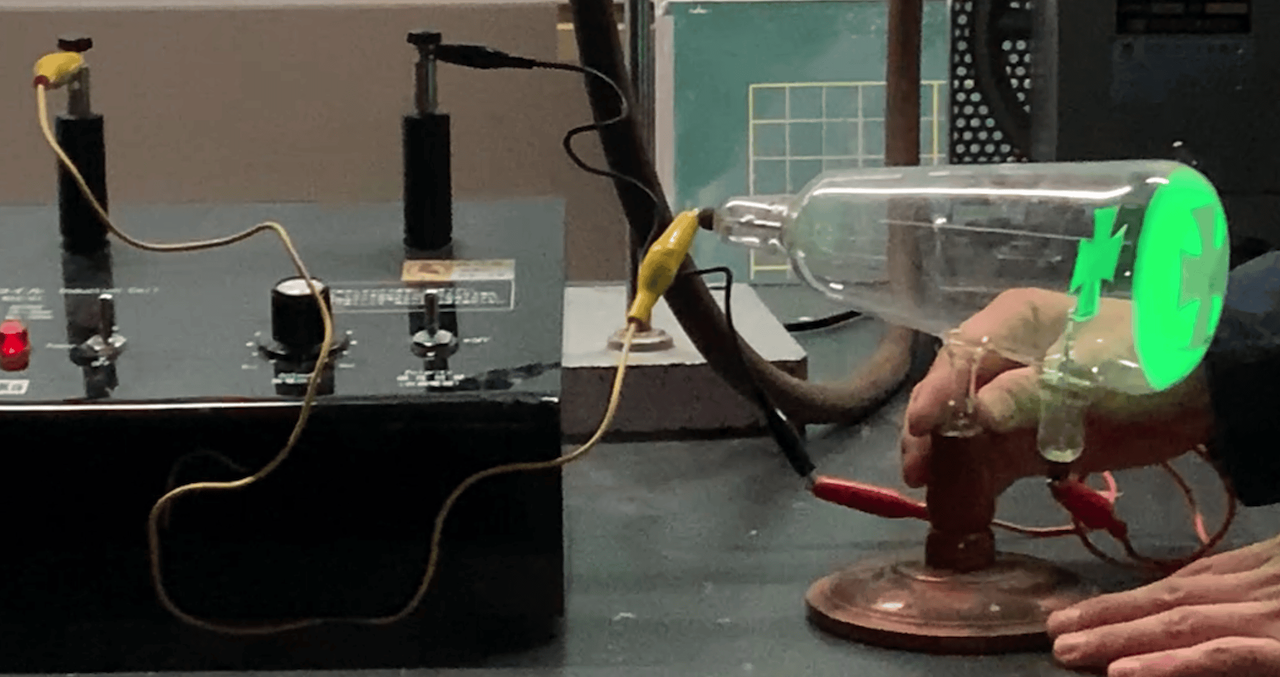
It’s clearly visible when viewed from the front.

When the terminals are connected in reverse, the cross pattern is not clearly visible.

The way the shadow is cast confirms that the electron beam travels straight from the negative (-) terminal (yellow) toward the positive (+) terminal (red). The crisp shadow is formed because the electrons, flying in a straight line, are blocked by the cross. When connected in reverse, no shadow is formed because no electrons are being emitted.
From this result, we can observe and understand that electrons, the true identity of electric current, are emitted from the negative terminal.
Regarding the direction of electric current, Benjamin Franklin decided around 1750 that it flowed from plus (+) to minus (-). However, the true identity of the current was unknown at the time. About a century later, in 1869, the scientist Hittorf pointed out that some kind of beam was being emitted from the negative terminal. What was learned at that time was that the particles responsible for the electric current flow from the negative terminal to the positive terminal. (Source: Wikipedia)
Here are some notes for instructors.
There are precautions to be aware of when demonstrating with a Crookes tube. Please read this thoroughly and be extra careful when performing the demonstration in front of students. To minimize X-ray generation, the following points are especially important:
Set the discharge output of the induction coil to the minimum level required to observe the electron beam. Maintain as much distance as possible. The distance from students should be 1 meter or more. Limit the demonstration time to about 10 minutes per year.
I personally conclude the observation after about three minutes. I also film a video to show them later.
Furthermore, since an induction coil is used, instructors may get an electric shock while explaining the experiment. I was once shocked, and the jolt was powerful enough to knock me over. Extreme care must be taken during operation.
We generated a cathode ray (electron beam) in a vacuum discharge tube with electrodes and applied an electric field vertically. Which way does it deflect? The direction of deflection reveals the type of electric charge the cathode ray carries.
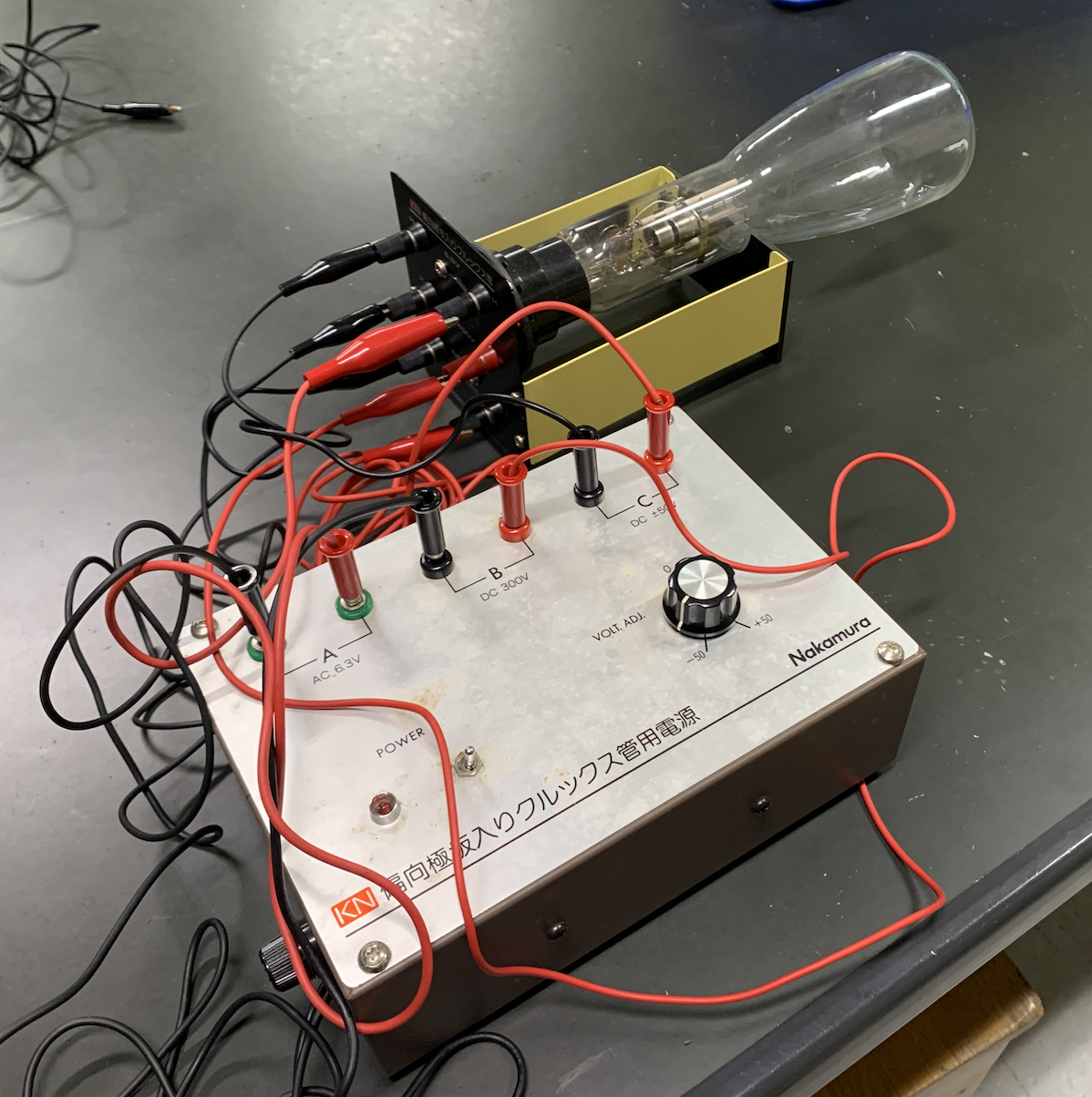
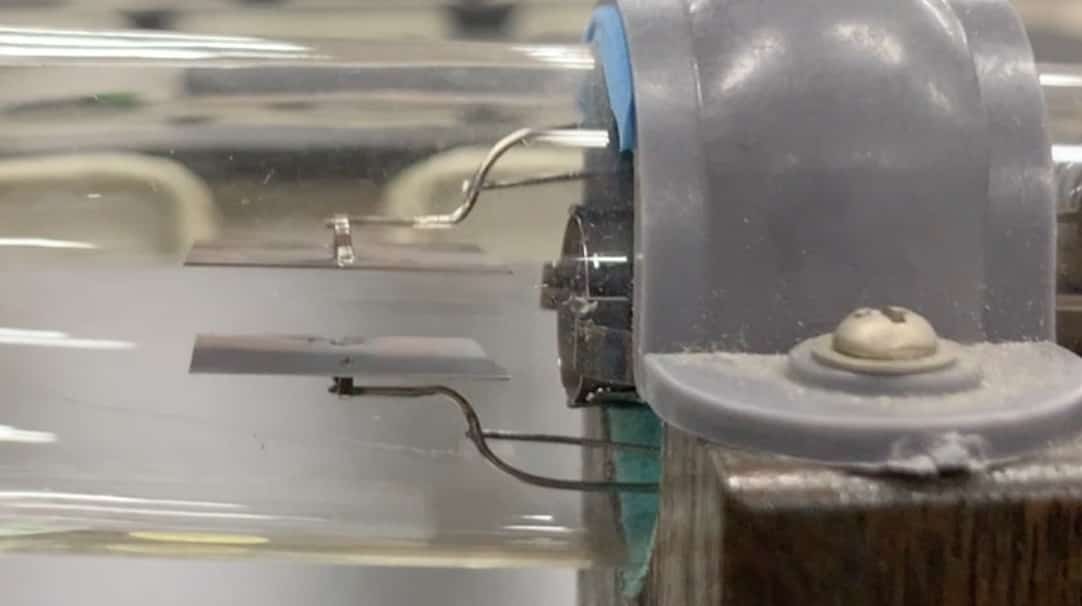
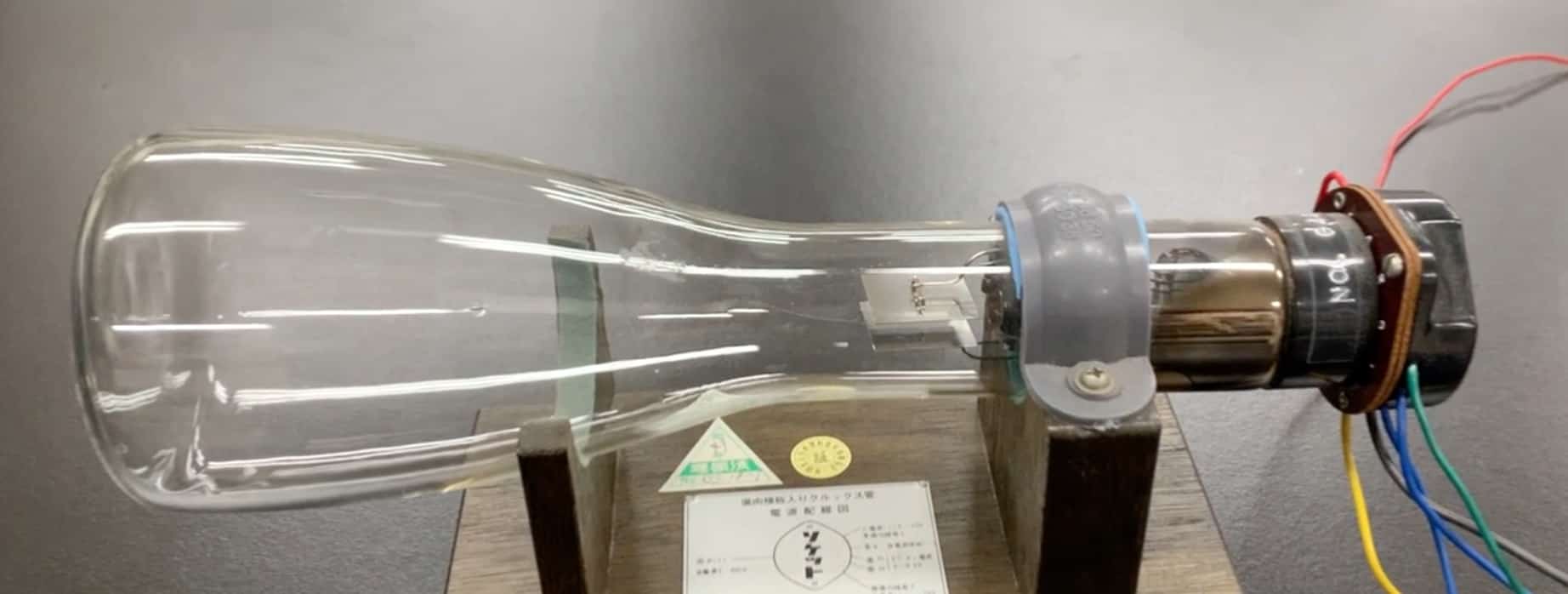
When no electric field is applied, the beam travels straight.
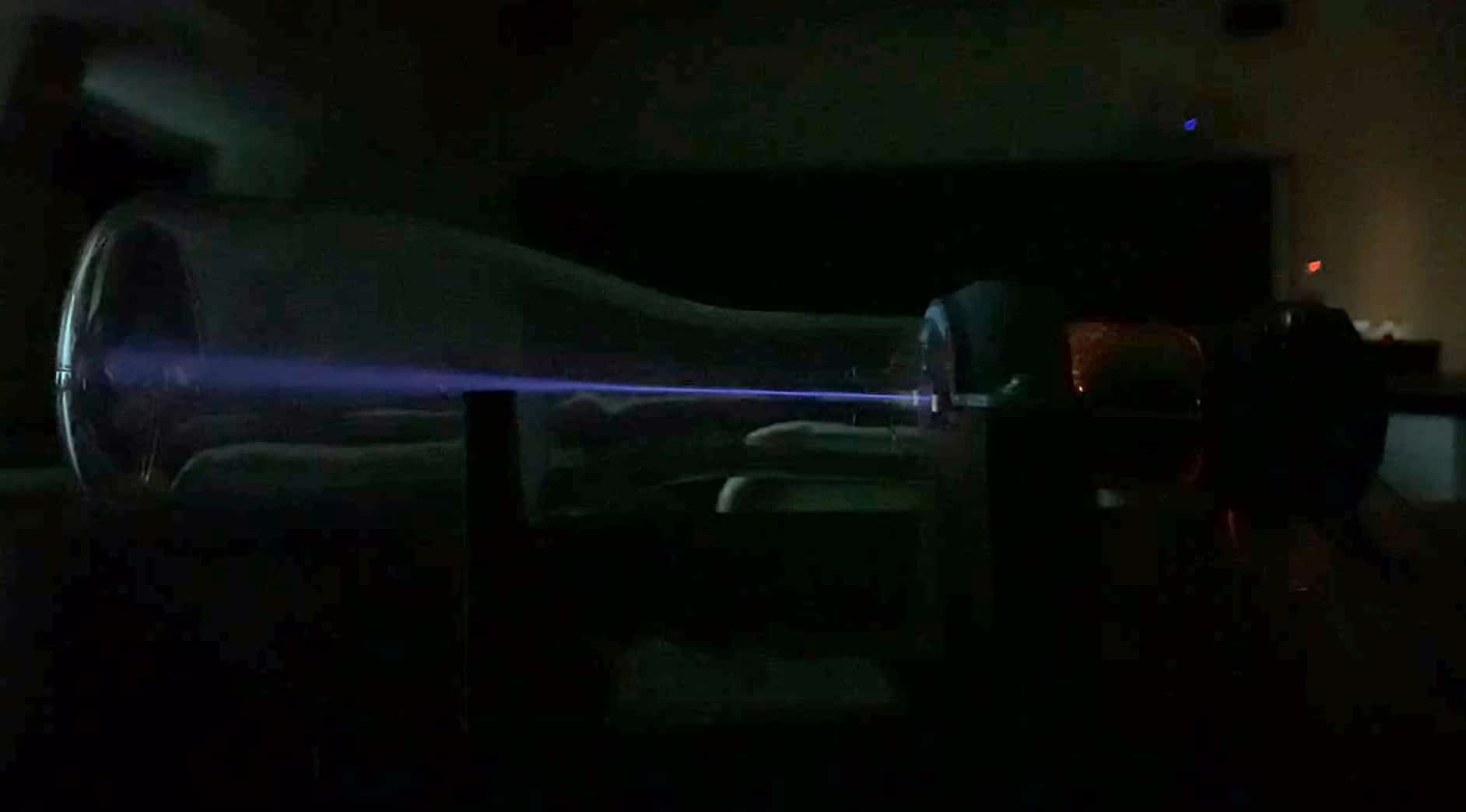
When the electric field has the positive (+) terminal on top and the negative (-) terminal on the bottom, the electron beam deflects upwards.
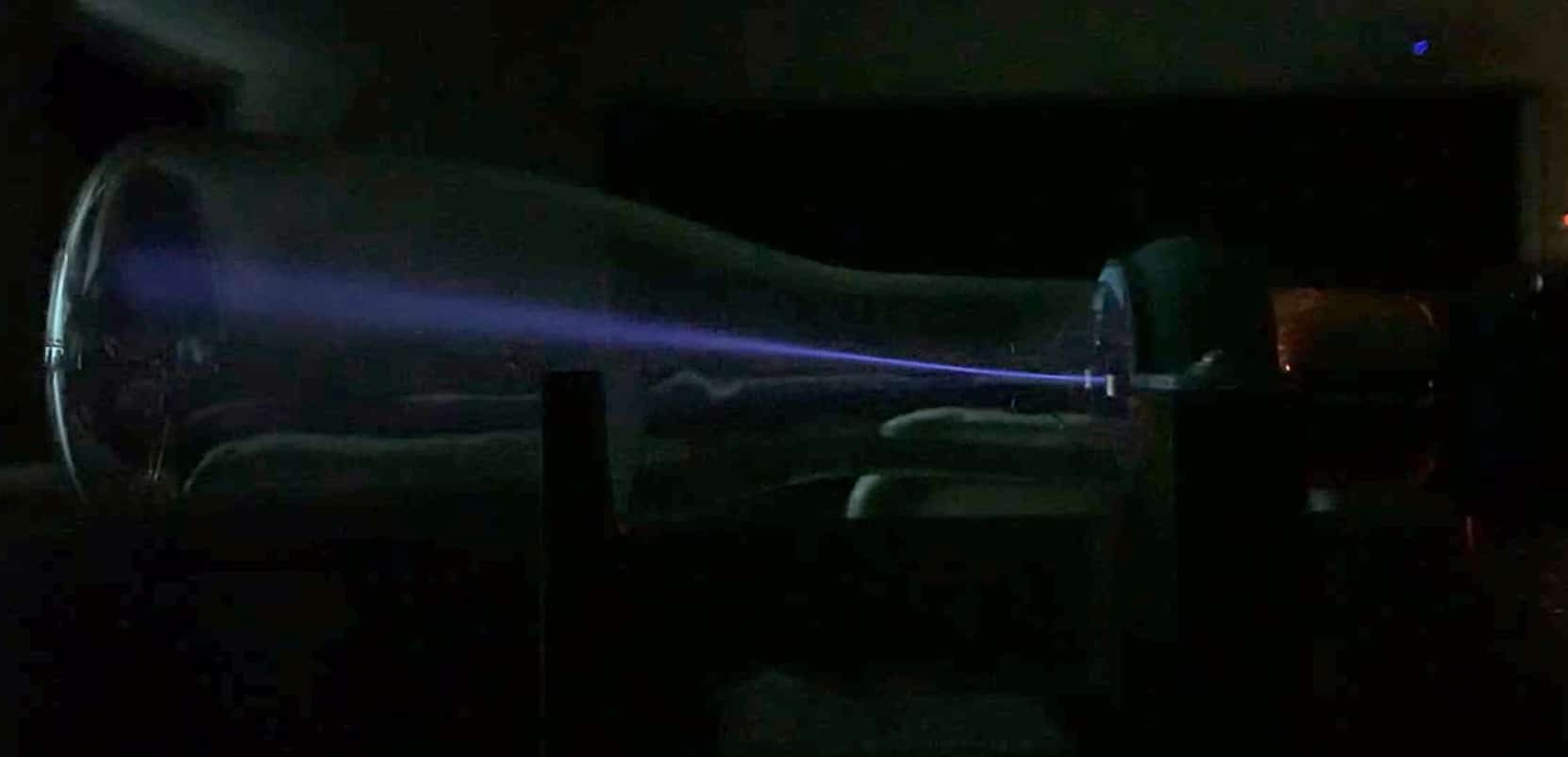
Conversely, when the electric field has the positive (+) terminal on the bottom and the negative (-) terminal on top, the electron beam deflects downwards.

The connection method is shown here:

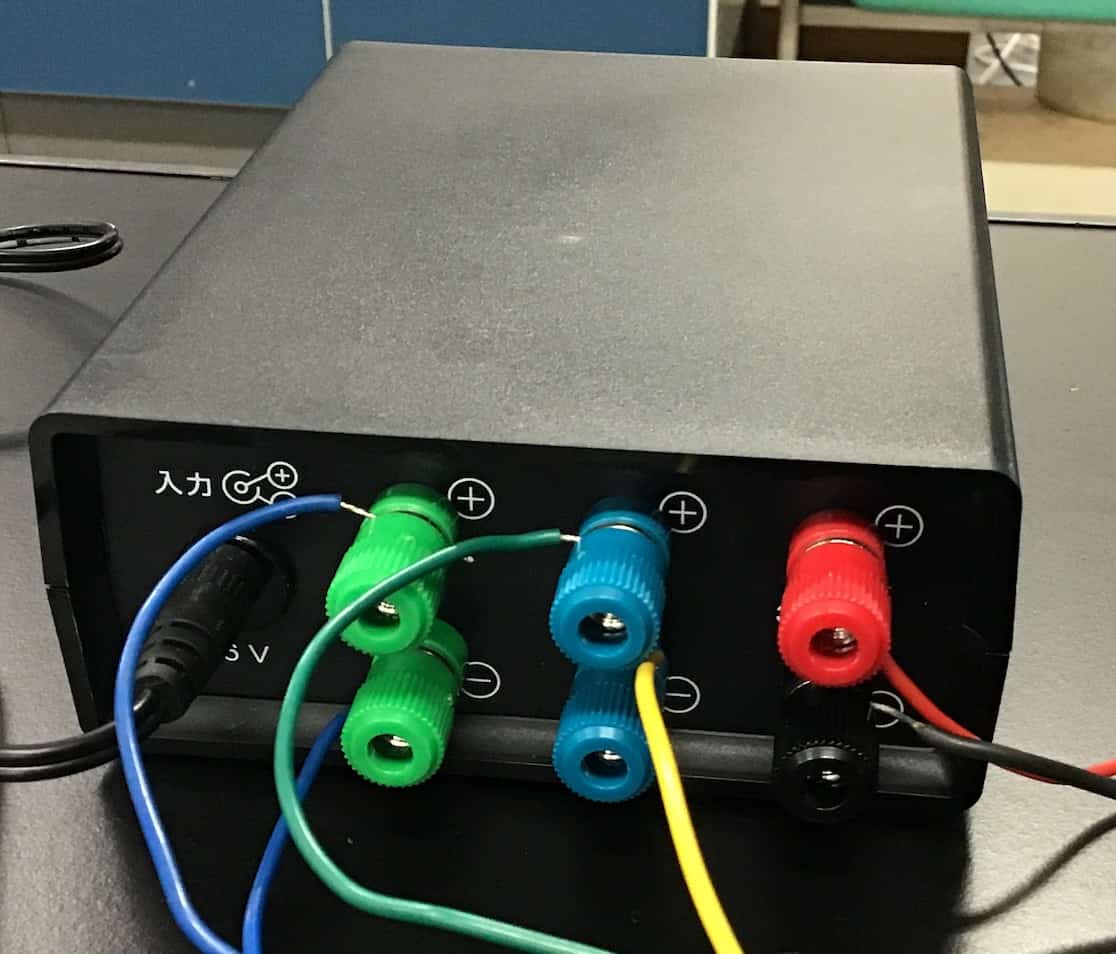
The same mechanism for controlling the movement of electrons is used in Cathode Ray Tube (CRT) televisions. Here’s a look at what happens when a magnet is brought close to an old TV—check it out!
Here’s how the electron beam (cathode ray) behaves when a magnet is brought near. Use your left hand to check if the direction of deflection is consistent with the Lorentz force!
A beam is emitted from the cathode. The fact that a shadow is formed when the beam hits a target confirms that particles are being emitted from the cathode.
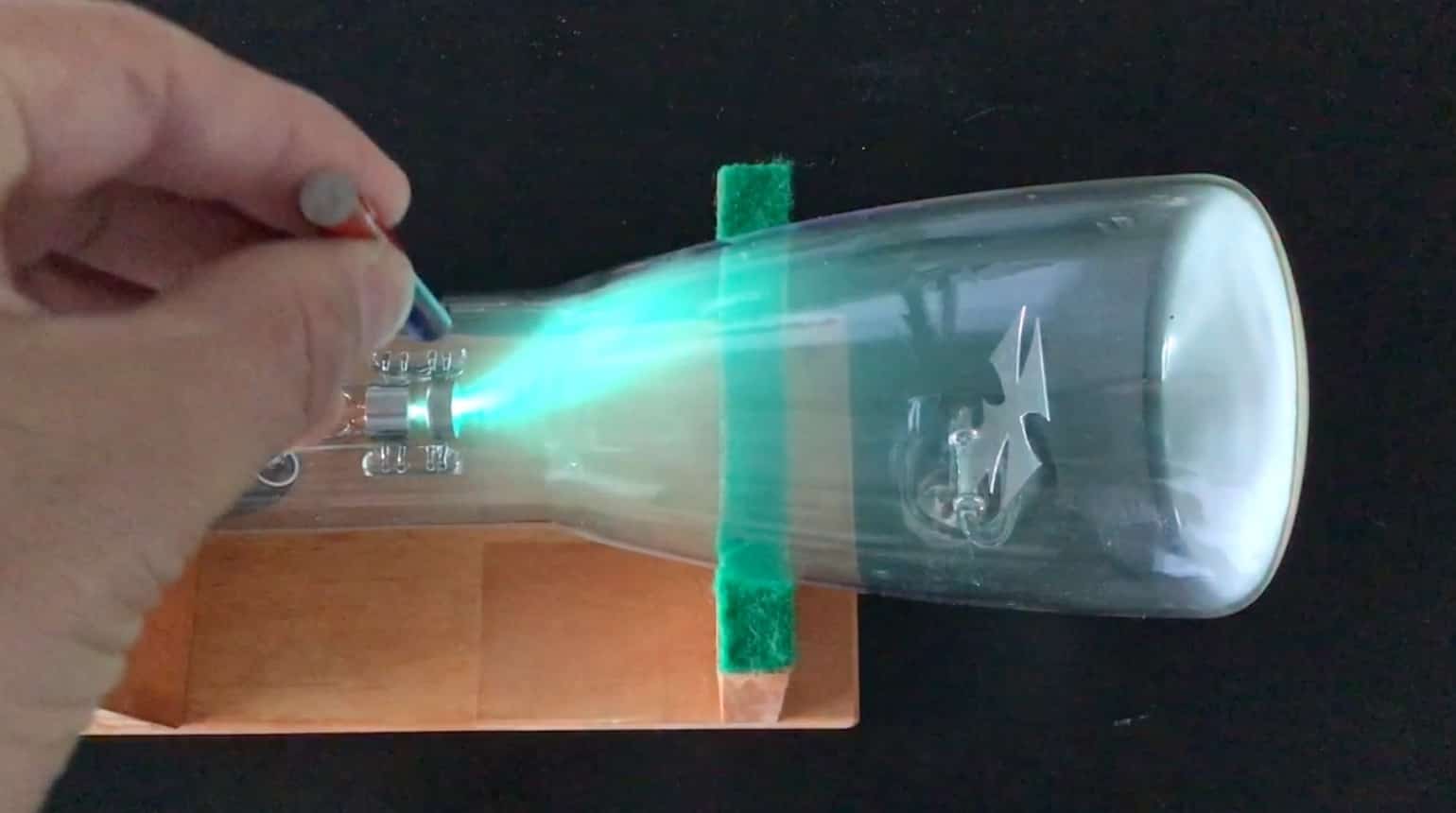
When the south (S) pole is brought near, the beam deflects downwards.
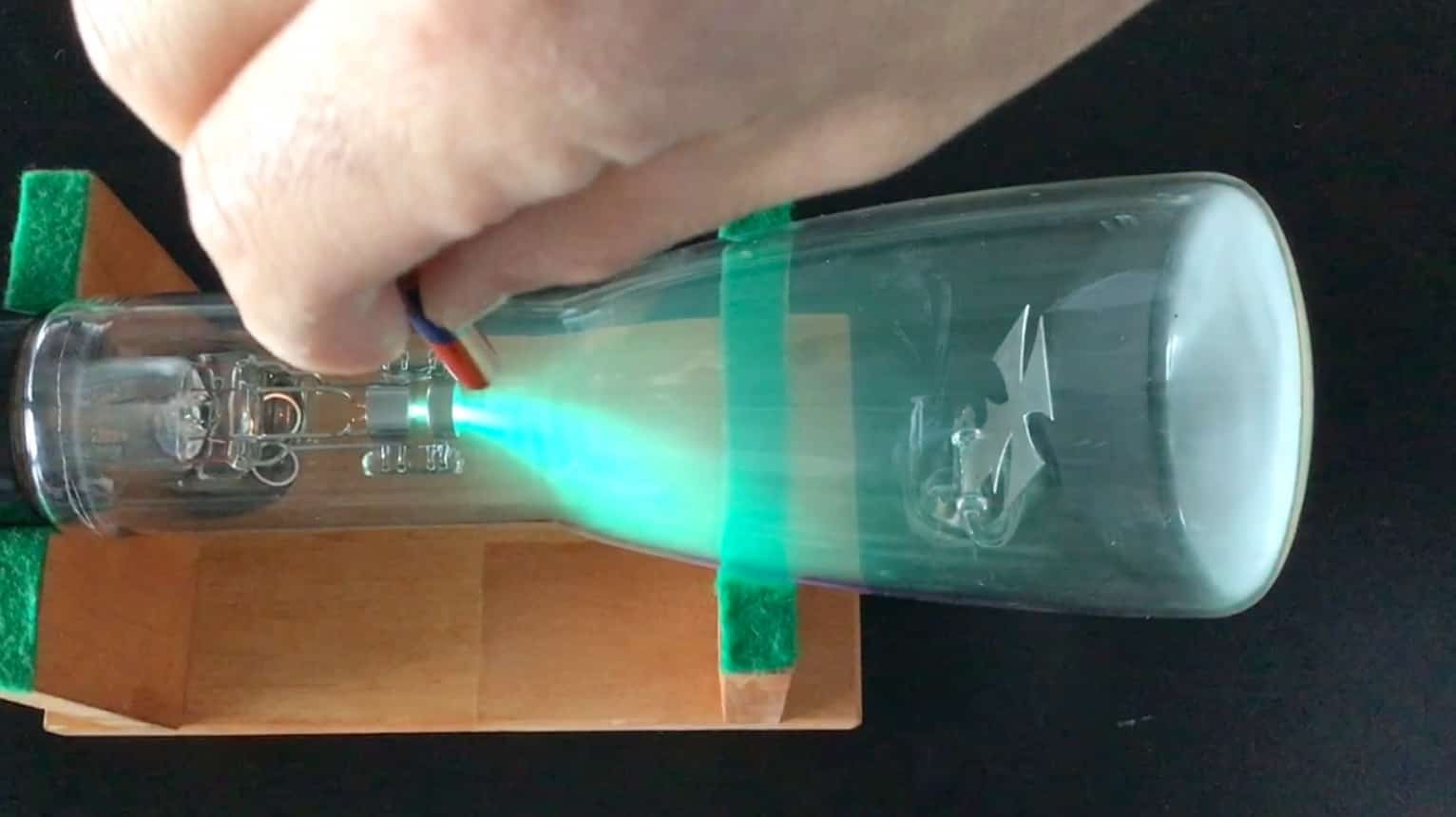
Try matching the direction of your hand with Fleming’s Left-Hand Rule!
Please also check out this article:
These sites are also highly recommended:
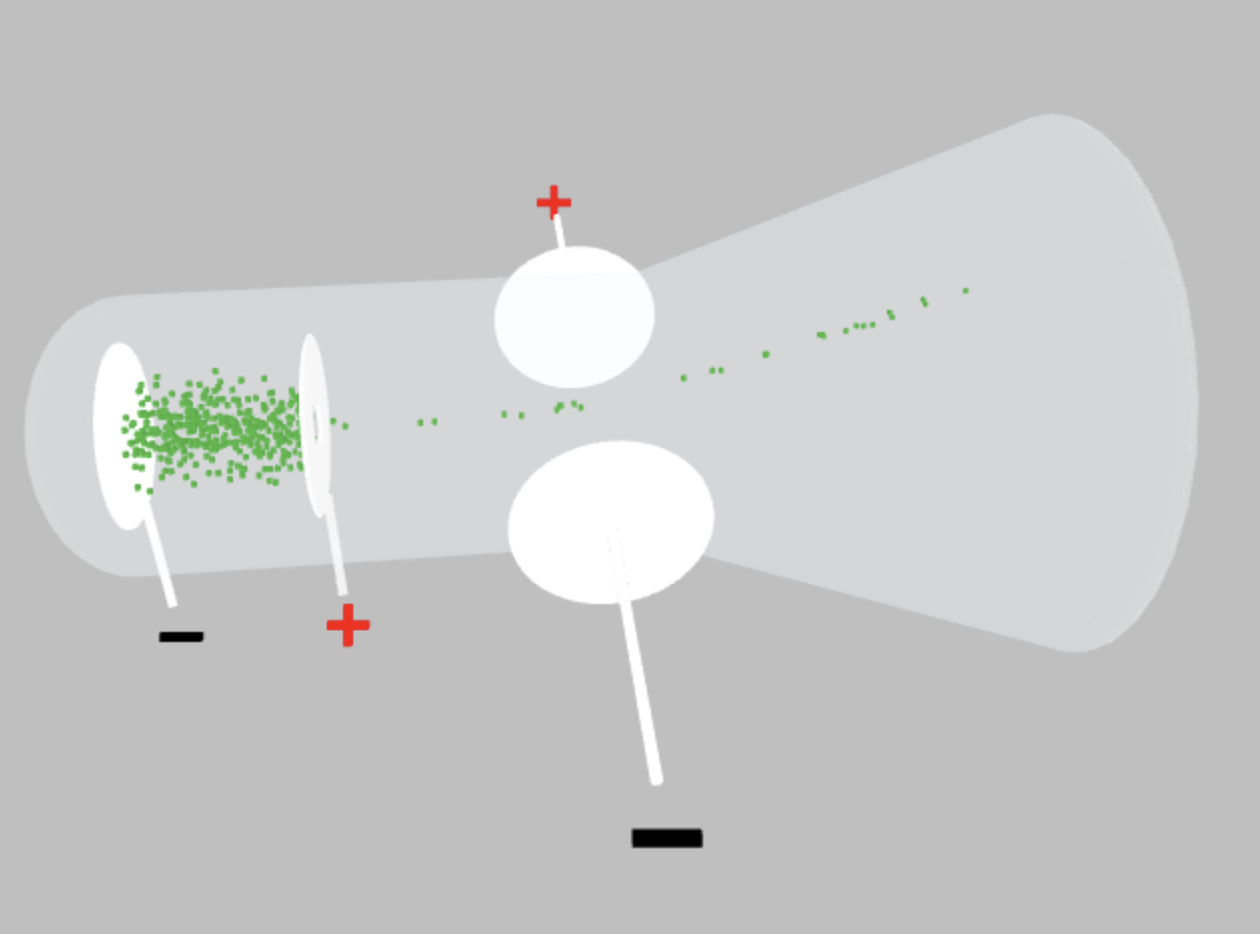
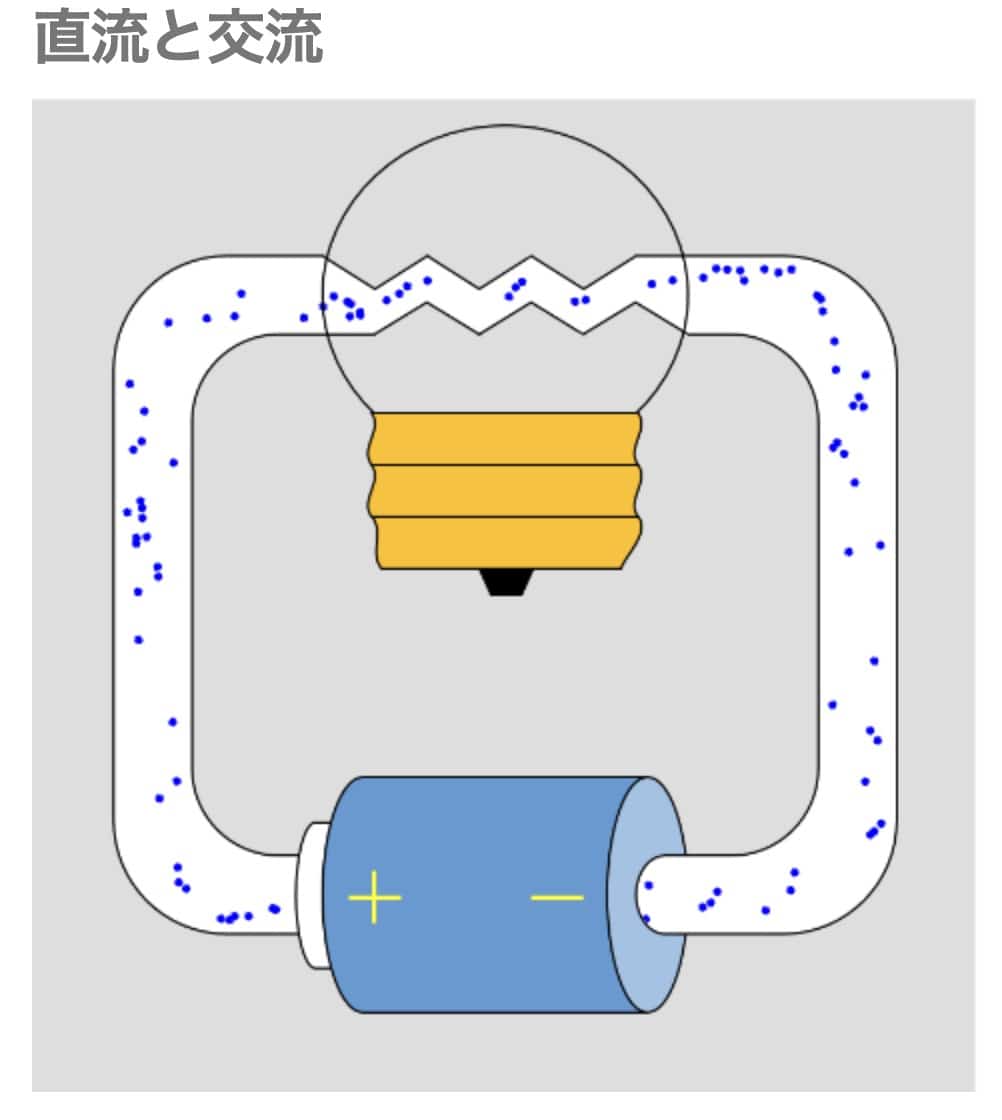
For the following topic of radiation, this video is recommended:
Amazing Experiments with a Static Electricity Generator (Van de Graaff)!
We also share exciting experiments using a Van de Graaff generator. This includes experiments we’ve conducted on TV programs with celebrities like Suzu Hirose, Ryohei Suzuki, Yasuko, and Chocolate Planet’s Osada and Matsuo. Click here for more details.
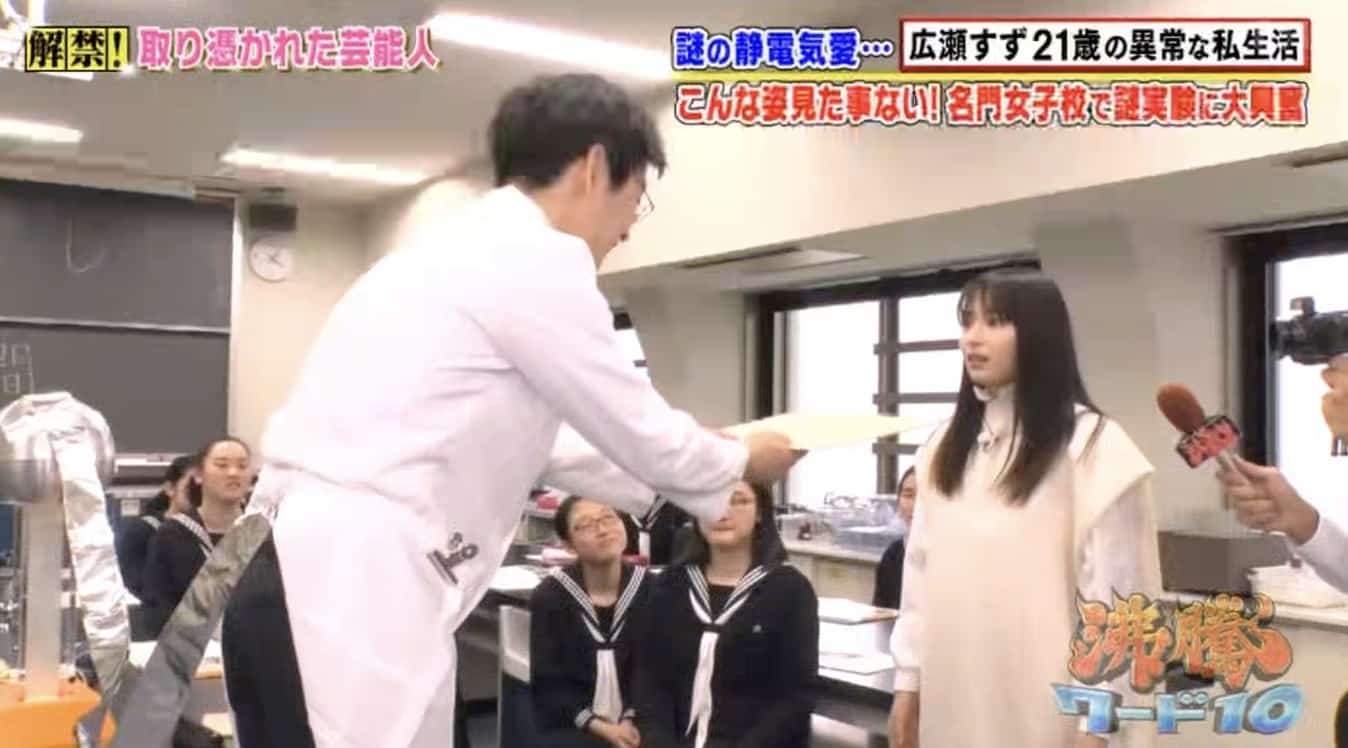
* IMPORTANT NOTE: Experiments using a static electricity generator (Van de Graaff) must always be conducted in the presence of a specialist. Please proceed with caution. For inquiries regarding static electricity experiments (workshops, TV supervision/appearances, etc.), please contact us here.
【Feature】You Can’t Stop! Awesome Static Electricity Experiments
Contact & Collaboration
We make the wonders and fun of science more accessible! We’ve put together easy-to-understand guides on fun science experiments you can do at home and tips for success. Feel free to search around! • The content of “Science Note” has been turned into a book. Click here for details. • For information about the operator, Ken Kuwako, click here. • For various requests (writing, lectures, workshops, TV supervision/appearances, etc.), click here. • Article updates are distributed on X!
![]() Experiment videos are being delivered on the Kagaku no Neta Channel!
Experiment videos are being delivered on the Kagaku no Neta Channel!


